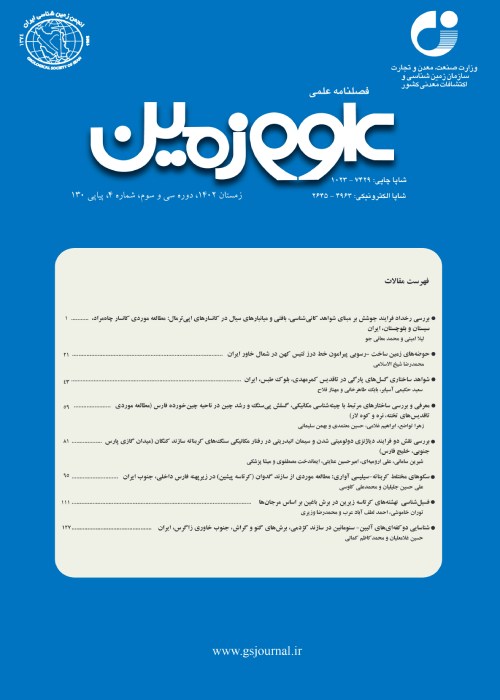Aquifer geometry of Sahneh-Bisetun plain based onmorphotectonic and active faulting, Kermanshah province, Iran
Author(s):
Abstract:
The NW-SE trendingSahneh-Bisetun Plain is located in the northeast of the Kermanshah province, and is extendedmore or less sub-parallel with the Zagros structural zone. The proximity of this plain with the Main Recent Fault (MRF) makes its study more important. In this study, in addition to the identification of the faults affecting the Sahneh-Bisetun Plain, formation of the plain and how it evolved in association with the active surrounding faults have been investigated. The general results of this study show that the geometry and morphology of this plain is affected by the Badrban and Barnaj active and hidden faults. The Sahneh-Bistun basin has been formed as the result of normal movement of the Barnaj fault in east of the Bistun-Tagh Bostan Mountain and thrust mechanism of the Badrban fault. The structural pattern of the aquifer was determined by the study of the interaction of active surrounding faults controlling the Quaternary basin and by using geo-electric data and qualitative analysis. Thickness ofaquifer in different parts of the plain was also measured. It indicates that the thickest part of the alluvium is located at the center of the plain and thins towards the surrounding rock units in the northwest or southeast. The NW-SE trendingSahneh-Bisetun Plain is located in the northeast of the Kermanshah province, and is extendedmore or less sub-parallel with the Zagros structural zone. The proximity of this plain with the Main Recent Fault (MRF) makes its study more important. In this study, in addition to the identification of the faults affecting the Sahneh-Bisetun Plain, formation of the plain and how it evolved in association with the active surrounding faults have been investigated. The general results of this study show that the geometry and morphology of this plain is affected by the Badrban and Barnaj active and hidden faults. The Sahneh-Bistun basin has been formed as the result of normal movement of the Barnaj fault in east of the Bistun-Tagh Bostan Mountain and thrust mechanism of the Badrban fault. The structural pattern of the aquifer was determined by the study of the interaction of active surrounding faults controlling the Quaternary basin and by using geo-electric data and qualitative analysis. Thickness ofaquifer in different parts of the plain was also measured. It indicates that the thickest part of the alluvium is located at the center of the plain and thins towards the surrounding rock units in the northwest or southeast.
Keywords:
Language:
Persian
Published:
Geosciences Scientific Quarterly Journal, Volume:26 Issue: 102, 2017
Pages:
197 to 206
magiran.com/p1672298
دانلود و مطالعه متن این مقاله با یکی از روشهای زیر امکان پذیر است:
اشتراک شخصی
با عضویت و پرداخت آنلاین حق اشتراک یکساله به مبلغ 1,390,000ريال میتوانید 70 عنوان مطلب دانلود کنید!
اشتراک سازمانی
به کتابخانه دانشگاه یا محل کار خود پیشنهاد کنید تا اشتراک سازمانی این پایگاه را برای دسترسی نامحدود همه کاربران به متن مطالب تهیه نمایند!
توجه!
- حق عضویت دریافتی صرف حمایت از نشریات عضو و نگهداری، تکمیل و توسعه مگیران میشود.
- پرداخت حق اشتراک و دانلود مقالات اجازه بازنشر آن در سایر رسانههای چاپی و دیجیتال را به کاربر نمیدهد.
In order to view content subscription is required
Personal subscription
Subscribe magiran.com for 70 € euros via PayPal and download 70 articles during a year.
Organization subscription
Please contact us to subscribe your university or library for unlimited access!


